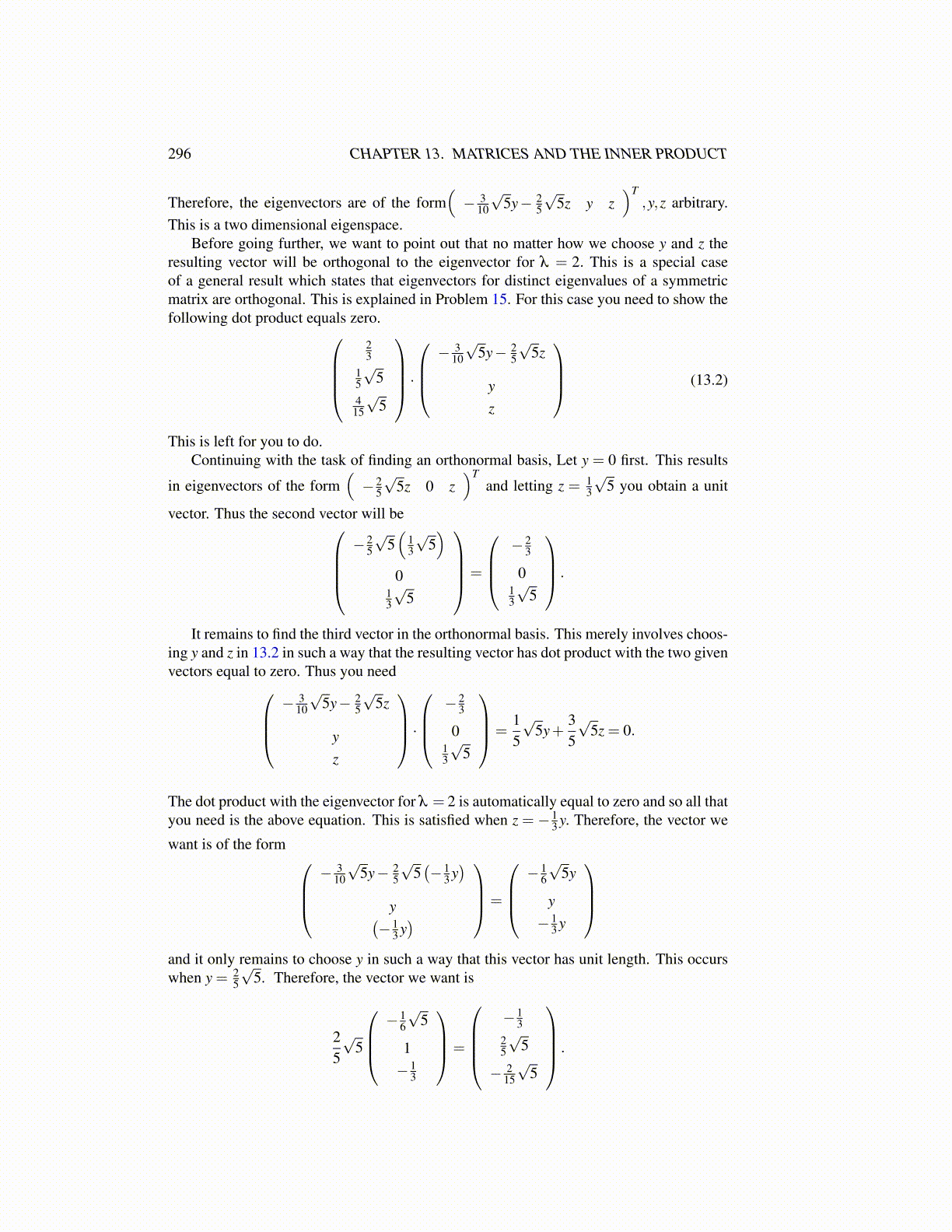
296 CHAPTER 13. MATRICES AND THE INNER PRODUCT
Therefore, the eigenvectors are of the form(− 3
10
√5y− 2
5
√5z y z
)T,y,z arbitrary.
This is a two dimensional eigenspace.Before going further, we want to point out that no matter how we choose y and z the
resulting vector will be orthogonal to the eigenvector for λ = 2. This is a special caseof a general result which states that eigenvectors for distinct eigenvalues of a symmetricmatrix are orthogonal. This is explained in Problem 15. For this case you need to show thefollowing dot product equals zero.
23
15
√5
415
√5
·− 3
10
√5y− 2
5
√5z
yz
(13.2)
This is left for you to do.Continuing with the task of finding an orthonormal basis, Let y = 0 first. This results
in eigenvectors of the form(− 2
5
√5z 0 z
)Tand letting z = 1
3
√5 you obtain a unit
vector. Thus the second vector will be− 2
5
√5(
13
√5)
013
√5
=
− 2
3
013
√5
.
It remains to find the third vector in the orthonormal basis. This merely involves choos-ing y and z in 13.2 in such a way that the resulting vector has dot product with the two givenvectors equal to zero. Thus you need
− 310
√5y− 2
5
√5z
yz
·− 2
3
013
√5
=15
√5y+
35
√5z = 0.
The dot product with the eigenvector for λ = 2 is automatically equal to zero and so all thatyou need is the above equation. This is satisfied when z = − 1
3 y. Therefore, the vector we
want is of the form − 3
10
√5y− 2
5
√5(− 1
3 y)
y(− 1
3 y)
=
− 1
6
√5y
y− 1
3 y
and it only remains to choose y in such a way that this vector has unit length. This occurswhen y = 2
5
√5. Therefore, the vector we want is
25
√5
− 1
6
√5
1− 1
3
=
− 1
325
√5
− 215
√5
.